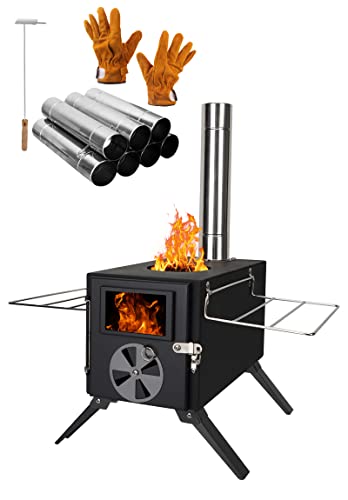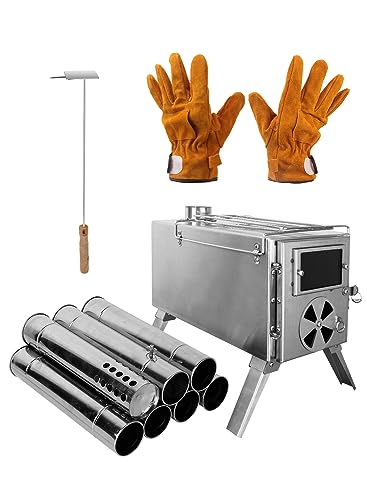The Complete List Of Woodburning Stove Dos And Don'ts
페이지 정보

본문
How to Properly Operate a Woodburning Stove
Wood stoves are a cozy and inexpensive way to heat your home. Smoke from wood stoves can be hazardous to your health. It is important to know how these appliances function and to operate them properly.
Many modern stoves rely on a catalytic or secondary combustion to reduce their emissions. Older stoves and open flames release high levels of particulates.
The firebox
The firebox is the heart of any fireplace system. It's where you create a fire to heat your home and provide ambiance. It's a simple concept, but there are many important details that must be accounted for to keep your wood burning stove safe and efficient.
The firebox can be thought of as a combustion chamber with walls and a lid. Most fireplaces come with an already-built metal firebox or masonry firebox. The type of box you choose depends on your preferences as well as the type of fireplace you have.
Most small wood burning stove for sale-burning stoves use a constant flow of air to generate the flame and burn the multi fuel wood burner. Fresh air is drawn through adjustable dampers located inside the stove's doors. This lets the fuels burn properly and reduces the harmful gasses that result from incomplete or unburnt burning. The exhaust gases will be drawn up the chimney, and then away from your home.
Modern stoves with catalytic second combustion use a special catalyst that allows unburned gases to be reburned to create additional warmth. This produces a cleaner and less polluting fume than traditional wood stoves with no secondary combustion. Modern non-catalytic stoves are available, but they're usually less efficient than stoves with secondary combustion that is catalytic.
Certain fireplaces that burn small wood burning stove have backboilers that can be used for space heating as well as water heating. These are referred to as "combination" or "hybrid" stoves and have been around since the early 20th century.
Wood burning stoves should be lit with seasoned wood. Freshly cut (green) wood has a high content of moisture that can lead to low flue temperatures and a lot of creosote buildup in the chimney. This can lead to chimney fires that can damage your stove and even be harmful to the health of your family.
If you're in search of an expert who can examine your wood-burning stove or do firebox repairs, ensure that the chimney technician you choose is certified by the CSIA certification and also has reviews from customers on their website. It's also important to ask about their pricing and what is the type of work they can do.
The pipe for ventilation
Ventilation is a must for wood stoves in order to remove smoke and keep the home safe and warm. Venting helps eliminate carbon monoxide, nitrogen dioxide and excess moisture from the combustion process. It also reduces the impact of heat loss and air pollution outside. Gas, wood and pellet stoves all have different requirements for venting. It is crucial to keep the stove's venting systems on an annually to ensure safety and efficiency.
The ventilation system consists of the firebox, the vent pipe, and the chimney. The chimney and the ventilation pipe work together to create draft that draws smoke from the stove out through the fireplace. Draft is generated through the differences in density and temperature between hot wood stove Burners smoke and cold outside air. The higher the temperature, more smoke will rise through the vent pipe and chimney.
Most modern wood stoves are certified by the EPA as low-emission units. This means that they emit less pollutants than older models, and contribute to global warming and other environmental issues. Most newer stoves also come with pollution controls built-in to limit how much they emit, while also ensuring that the carbon emissions are burned in an efficient manner.
Older stoves with open flues emit lots of carbon dioxide, poisonous gas that should not be allowed to escape into the home. This can happen if the chimney isn't clean or if there is not enough ventilation. It is crucial to install carbon monoxide detectors in your home.
Measure the distance between the opening of the chimney in the ceiling or wall and the place where the wood stove is on the floor. Multiply this distance by two to determine the length of stovepipe that you require. You can use single-wall or double-wall stovepipes and ensure that you have adequate clearance from combustibles with either type.
When the stove is first lit and the flame is first lit, adjust the vent until a proper flame has been created and the combustion process is stable. It is advised to avoid using wood logs in the stove as they could contain volatile chemicals which can cause the air vents to fail.
The chimney
The chimney is a complex system that requires careful care. The chimney is composed of a variety of components which are all essential for the safe and efficient operation of your stove.
The firebox, the ventilation pipe and chimney work together to exhaust the gases from combustion produced by your woodburning stove to the outside. This is crucial to reduce carbon dioxide levels and prevent harmful emissions. To achieve this, the chimney and flue have to be hot enough to allow the gases out of the fireplace, without cooling. This can be accomplished by using a wood-burning stove which produces a large amount of heat, and by adding new logs regularly to the fire.
Modern wood-burning stoves have a higher chimney than older models to enhance the drafting effect. This could cause problems in the event that your chimney's height exceeds the maximum height for your area. If this occurs the chimney could be competing with the house stack for draft, causing gases to cool before they exit. This can impede the gas flow and cause a buildup of creosote which could pose a fire risk.
One of the most common errors that homeowners make is to open and close the fireplace door too frequently which could negatively impact the combustion. It is crucial to keep the fireplace door as tightly shut as you can, and only open it to add firewood or ash. The door should not be open for long. This lets hot air from the stove to escape, making the best small wood burning stove cooler and less likely to light.
Another mistake that many make is to use different types of combustibles in their woodburning stoves, which could cause higher emissions, or even a chimney fire. The fact is that woodburning stoves are designed and optimised to burn firewood, not other types of combustibles.
The flue
To ensure proper air flow, a woodburning stove needs flues that are the proper size. The flue must be at least 25 percent larger than the stove pipe that connects the chimney and the stove to allow for sufficient smoke flow. A wood stove must be placed on a non-combustible hearth that has a clear space in front of the fireplace opening.
Modern stoves are equipped with catalytic combustion systems that reduces the amount of harmful byproducts that are released into the chimney. This feature is also able to improve the efficiency of wood stoves by burning a fire that generates more heat and less polluting. Using other types of combustibles than firewood, however, can result in problems with lower efficiency and higher emission levels.
It is crucial to use dry or seasoned outdoor wood burning cookers when you are burning wood in your stove or fireplace. If your wood isn't dry or seasoned it will release high levels of creosote and water vapor into the chimney. This can cause low flue temperatures, and even a fire in the chimney.
A professional can also help you avoid the possibility of a chimney fire by regularly inspecting and cleaning the flue system. This should include the chimney, stovepipe and chimney itself to ensure that they are all in good working order.
A dirty stove and flue system could result in a poor chimney draft that can produce carbon monoxide in your home. This could be harmful to your family members and you shouldn't let it happen.
 A good rule is to have your chimney and stove cleaned by a professional at least once a year. This will also help to keep the chimney and stove working efficiently.
A good rule is to have your chimney and stove cleaned by a professional at least once a year. This will also help to keep the chimney and stove working efficiently.
Wood stoves are a cozy and inexpensive way to heat your home. Smoke from wood stoves can be hazardous to your health. It is important to know how these appliances function and to operate them properly.
Many modern stoves rely on a catalytic or secondary combustion to reduce their emissions. Older stoves and open flames release high levels of particulates.
The firebox
The firebox is the heart of any fireplace system. It's where you create a fire to heat your home and provide ambiance. It's a simple concept, but there are many important details that must be accounted for to keep your wood burning stove safe and efficient.
The firebox can be thought of as a combustion chamber with walls and a lid. Most fireplaces come with an already-built metal firebox or masonry firebox. The type of box you choose depends on your preferences as well as the type of fireplace you have.
Most small wood burning stove for sale-burning stoves use a constant flow of air to generate the flame and burn the multi fuel wood burner. Fresh air is drawn through adjustable dampers located inside the stove's doors. This lets the fuels burn properly and reduces the harmful gasses that result from incomplete or unburnt burning. The exhaust gases will be drawn up the chimney, and then away from your home.
Modern stoves with catalytic second combustion use a special catalyst that allows unburned gases to be reburned to create additional warmth. This produces a cleaner and less polluting fume than traditional wood stoves with no secondary combustion. Modern non-catalytic stoves are available, but they're usually less efficient than stoves with secondary combustion that is catalytic.
Certain fireplaces that burn small wood burning stove have backboilers that can be used for space heating as well as water heating. These are referred to as "combination" or "hybrid" stoves and have been around since the early 20th century.
Wood burning stoves should be lit with seasoned wood. Freshly cut (green) wood has a high content of moisture that can lead to low flue temperatures and a lot of creosote buildup in the chimney. This can lead to chimney fires that can damage your stove and even be harmful to the health of your family.
If you're in search of an expert who can examine your wood-burning stove or do firebox repairs, ensure that the chimney technician you choose is certified by the CSIA certification and also has reviews from customers on their website. It's also important to ask about their pricing and what is the type of work they can do.
The pipe for ventilation
Ventilation is a must for wood stoves in order to remove smoke and keep the home safe and warm. Venting helps eliminate carbon monoxide, nitrogen dioxide and excess moisture from the combustion process. It also reduces the impact of heat loss and air pollution outside. Gas, wood and pellet stoves all have different requirements for venting. It is crucial to keep the stove's venting systems on an annually to ensure safety and efficiency.
The ventilation system consists of the firebox, the vent pipe, and the chimney. The chimney and the ventilation pipe work together to create draft that draws smoke from the stove out through the fireplace. Draft is generated through the differences in density and temperature between hot wood stove Burners smoke and cold outside air. The higher the temperature, more smoke will rise through the vent pipe and chimney.
Most modern wood stoves are certified by the EPA as low-emission units. This means that they emit less pollutants than older models, and contribute to global warming and other environmental issues. Most newer stoves also come with pollution controls built-in to limit how much they emit, while also ensuring that the carbon emissions are burned in an efficient manner.
Older stoves with open flues emit lots of carbon dioxide, poisonous gas that should not be allowed to escape into the home. This can happen if the chimney isn't clean or if there is not enough ventilation. It is crucial to install carbon monoxide detectors in your home.
Measure the distance between the opening of the chimney in the ceiling or wall and the place where the wood stove is on the floor. Multiply this distance by two to determine the length of stovepipe that you require. You can use single-wall or double-wall stovepipes and ensure that you have adequate clearance from combustibles with either type.
When the stove is first lit and the flame is first lit, adjust the vent until a proper flame has been created and the combustion process is stable. It is advised to avoid using wood logs in the stove as they could contain volatile chemicals which can cause the air vents to fail.
The chimney
The chimney is a complex system that requires careful care. The chimney is composed of a variety of components which are all essential for the safe and efficient operation of your stove.
The firebox, the ventilation pipe and chimney work together to exhaust the gases from combustion produced by your woodburning stove to the outside. This is crucial to reduce carbon dioxide levels and prevent harmful emissions. To achieve this, the chimney and flue have to be hot enough to allow the gases out of the fireplace, without cooling. This can be accomplished by using a wood-burning stove which produces a large amount of heat, and by adding new logs regularly to the fire.
Modern wood-burning stoves have a higher chimney than older models to enhance the drafting effect. This could cause problems in the event that your chimney's height exceeds the maximum height for your area. If this occurs the chimney could be competing with the house stack for draft, causing gases to cool before they exit. This can impede the gas flow and cause a buildup of creosote which could pose a fire risk.
One of the most common errors that homeowners make is to open and close the fireplace door too frequently which could negatively impact the combustion. It is crucial to keep the fireplace door as tightly shut as you can, and only open it to add firewood or ash. The door should not be open for long. This lets hot air from the stove to escape, making the best small wood burning stove cooler and less likely to light.
Another mistake that many make is to use different types of combustibles in their woodburning stoves, which could cause higher emissions, or even a chimney fire. The fact is that woodburning stoves are designed and optimised to burn firewood, not other types of combustibles.
The flue
To ensure proper air flow, a woodburning stove needs flues that are the proper size. The flue must be at least 25 percent larger than the stove pipe that connects the chimney and the stove to allow for sufficient smoke flow. A wood stove must be placed on a non-combustible hearth that has a clear space in front of the fireplace opening.
Modern stoves are equipped with catalytic combustion systems that reduces the amount of harmful byproducts that are released into the chimney. This feature is also able to improve the efficiency of wood stoves by burning a fire that generates more heat and less polluting. Using other types of combustibles than firewood, however, can result in problems with lower efficiency and higher emission levels.
It is crucial to use dry or seasoned outdoor wood burning cookers when you are burning wood in your stove or fireplace. If your wood isn't dry or seasoned it will release high levels of creosote and water vapor into the chimney. This can cause low flue temperatures, and even a fire in the chimney.
A professional can also help you avoid the possibility of a chimney fire by regularly inspecting and cleaning the flue system. This should include the chimney, stovepipe and chimney itself to ensure that they are all in good working order.
A dirty stove and flue system could result in a poor chimney draft that can produce carbon monoxide in your home. This could be harmful to your family members and you shouldn't let it happen.
 A good rule is to have your chimney and stove cleaned by a professional at least once a year. This will also help to keep the chimney and stove working efficiently.
A good rule is to have your chimney and stove cleaned by a professional at least once a year. This will also help to keep the chimney and stove working efficiently.
- 이전글You'll Never Be Able To Figure Out This Mercedes Spare Key Cost's Tricks 24.10.22
- 다음글The Ugly Truth About Bean To Cup Machine 24.10.22
댓글목록
등록된 댓글이 없습니다.
